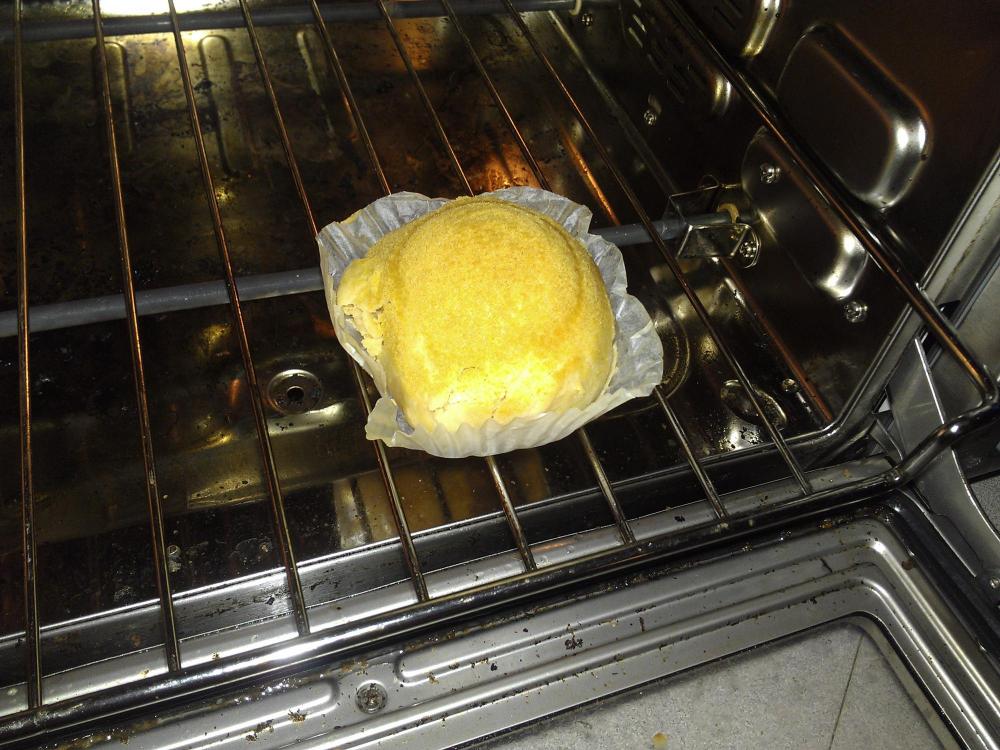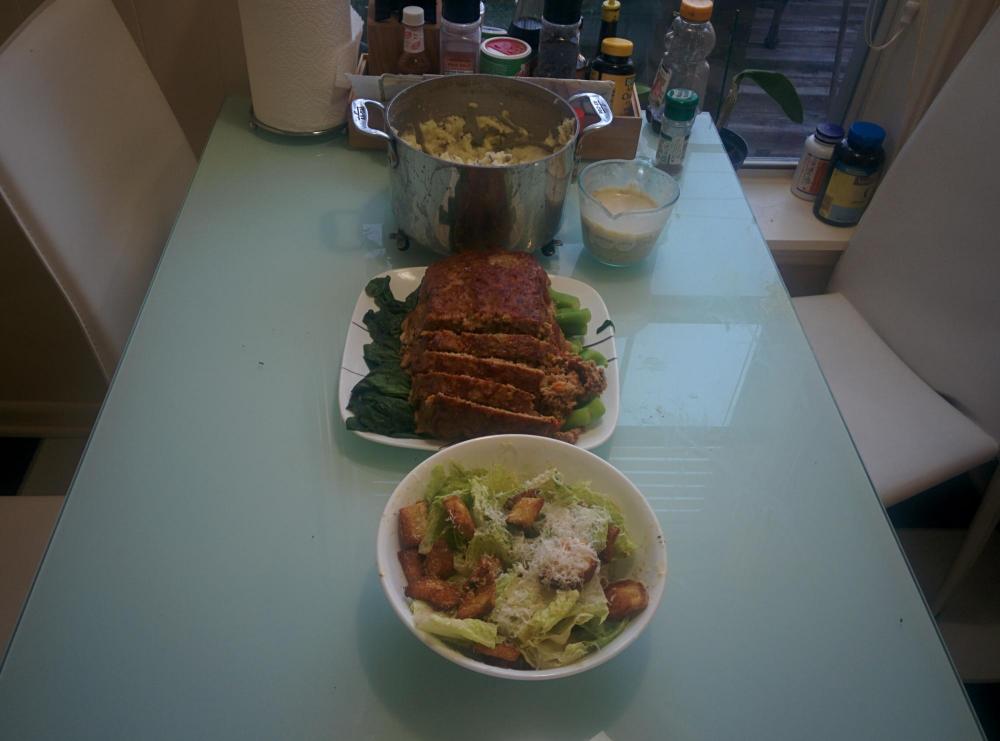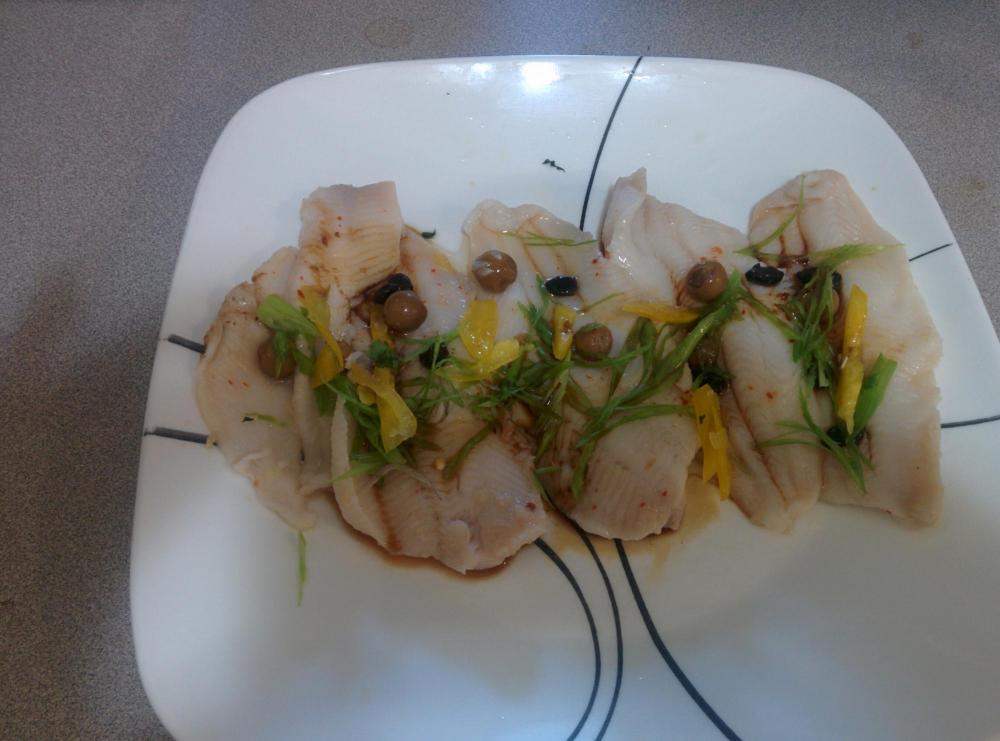
csingley
participating member-
Posts
56 -
Joined
-
Last visited
Content Type
Profiles
Forums
Store
Help Articles
Everything posted by csingley
-
Huh. "Modernist Cuisine" 2-71: "Steam... can transfer huge amounts of energy to food because it contains latent heat, which it deposits onto the food surface when it condenses". A couple pages later, there's a nice graph showing their experimental data, with steam cooking lagging just a little bit behind boiling... far closer than can be explained by the dramatic differences in density between liquid & gas phases. I guess Myrvhold's wrong too? Look, being right or wrong isn't the point... it's the WHY that's interesting to me. You really threw me talking about latent heat of condensation; I thought I was among thermo nerds, but if not I'm being quite a bore. I apologize for hijacking the thread. Back to cooking.
-
Blew past "off topic" a couple signposts ago! Just relevant to the reason why steam cooks roughly as fast as boiling in water, despite the lower thermal mass and identical temperature (which you pointed out). Latent heat of condensation is pretty large, and not comprehended in thermal mass or delta temp. That's the term that balances the books. But steaming vegetables still gets the thumbs down from me. Boo lite cuisine. I'll go with either "(b) microwave", or "(c) none of the above".
-
What you're missing is that potential energy (like the heat of vaporization stored in steam) is not thermal energy. When you cook potatoes in a steamer, the steam condenses on the potatoes and transfers the heat of vaporization to them. This is a separate energy transfer, in addition to the energy the fast-moving steam imparts by banging into the cooler potatoes because it's at a higher temp. Heat transfer via condensation is going to excite collisions in the food when you're cooking, but liberating heat of vaporization does not necessarily involve collision at all. If you put a blob of steam into outer space, it would lose the heat via radiation instead. It isn't useful to think of condensation as being some sort of collision effect, any more than burning is usefully understood as collision. You need to know how much EM potential energy is stored, and no matter how much calculus you throw at it, you can't derive that from treating the molecules as a vast collection of ping-pong balls operating under Newton's laws. This is not explained by classical statistical mechanics. There's more to thermodynamics than just hot things banging into cold things. Here's a wiki article on latent heat. Constant temperature => nonthermal energy transfer. Not collision.
-
I'm just being pedantic; you omitted the word "saturated" in your claim that steam by definition is pinned at the boiling point. Nah dude, surface tension is, like, electromagnetic and stuff. delta Hvap is potential energy converted to kinetic, not a transfer of kinetic energy via collision a la Boltzmann. NERD FIGHT!!
-
True dat, the Chinese don't steam vegetables. I'm pretty sure the jielan in oyster sauce served with dim sum is boiled. I was back in Taipei in August and had a hard time sourcing bamboo steamers. I ended up having to trek down to the old market down behind the train station - one of the main drags for restaurant supply. There I was able to find a couple shops that specialized in bamboo goods for food service, and hooking up with some real beauties - 14" diameter, 1/2" thick walls, thick wire handles covered with plastic tubing. Care of these things is more of a PITA than metal racks - if they've been disused, you have to soak them before use, then hang them up to dry afterward, whereas you can just blast metal steamers in a commercial dishwasher no problem.
-
You should try steaming your leftovers, it works better than the microwave for the most part. And as noted here, some foods (notably corn) work really well in the microwave - couldn't be easier. "Healthier"? This ought to be good. I'mma go pop some popcorn - in my microwave, of course. Superheated steam definitely exists; it's how steam locomotives worked. Nasty stuff. You're talking about "saturated steam" - wet steam not dry - both liquid and gas phases in thermodynamic equilibrium. Happily, saturated steam is all we get in the kitchen, but as long as we're defining. I think we can assume that ambient temp in a steamer is the BP of water, so condensation rather than collision is going to be a major mode of heat transfer to the potatoes, eh.
-
When I've cooked duck legs in fat in a 225 degF oven, it's taken me more like 5 hours. Maybe the foil helps it steam and cook quicker? Or maybe I just like my confit more broken down... I usually wind up shredding it into gumbo, not plating it as a dish. Right sir, steam-baked confit will have to be done. For science. I'm somewhat skeptical of salting the legs and tossing them straight in the oven, though. No way they've cured properly before cooking.
-
Having done it several ways, I would very much recommend doing confit en sous vide. After a quick cure, bag each leg separately with perhaps 1 tbsp of fat. Then when they're done, chill them in ice water and throw most of them in the freezer. Now any time you want you can take one (or more) of the legs out of the freezer, toss it in a water bath, and perhaps half an hour later have it good to go. The quality of sous vide confit is very good once you dial in time & temp that you prefer. Although I don't have the book, my notes indicate that Keller calls for cooking the duck legs en sous vide 8h @ 180degF, which is a great place to start. I have never had much luck going "lower for longer" on the confit; you want relatively high temperature. You can easily use chicken fat, but surely duck fat will taste better - never tried that. I always get my legs from butchering whole ducks, and can easily render enough extra fat off each carcass to confit its own legs in a vacuum bag. If you're doing it in the oven, you'll need much more fat to submerge the legs in the traditional manner. If you purchased only legs and don't want to add the significant cost for a lot of store-bought duck fat, I can understand the attraction of the schmaltz. Try it out and let me know how it goes! There is no point in turning on the convection fan, though, if you're cooking in a dutch oven... the air won't really circulate down in there. Usually you use convection for shallow trays of cookies etc., or else other foods elevated above the pan on a rack to expose them to the full fury of the whirlwind.
-
You just have to plan ahead. It gets a slow first rise while defrosting in the fridge. As a matter of fact I just pulled some pizza dough out of the freezer planning to eat it for dinner tomorrow. Overnight in the fridge, a couple hours on the counter, that's all the rise you need.
-
For frozen bread, I either just directly toast slices out of the freezer (like setting 3 or 4) or else thaw bread, slice it, and toast slices as per usual.
-
I just observe, out there in the real world, my children scarfing down the candy grapes with much gusto and yummery, leaving me to work out the whys and wheretofors. As babies, up through the toddler stage, my kids both went for crazy sour foods... I remember when my 1YO son went to the oyster bar, he'd pick up lemon wedges out of the bucket, bite them, make a face, and bite some more (meanwhile his 5YO sister would be polishing off 3 dozen oysters... definitely NOT a typical kid appetite!) Somewhere between 3-4YO this preference for sourness turned way down in favor of the sweet tooth. As of now (ages 6 and 10), when we make lemonade, they'll take the juice concentration at the same level I do, but prefer it a little more dilute... and want about twice as much sugar in their lemonade as I do. I'd say they've grown out of the sour phase. I wondered the same thing after that little exchange. Better, I'd imagine, as tarter from the added carbonic acid... and the kids would DEFINITELY love that. If you've got some real balsamic vinegar, try a drop on a cotton candy grape. The balsamico's got everything the grape is missing. I'd have to experiment with cheese pairings... maybe some extra aged gouda, with the nuttiness and the bitterness. Maybe some stilton on a cracker. Not parmigiano I would think. If you sliced the cotton candy grapes, they'd probably be good as a garnish on a sorbet or a granita, with a sprig of mint... or hell, maybe with some thai basil; the grapes could probably stand up to it.
-
Moon cakes y'all! 7 min @ 350degF straight convection. The good stuff brought back from Taipei... sweet mung bean paste filling with a salted duck egg yolk, taken with copious strong oolong tea in between strolls out to the yard with the children to hunt for the moon. Happy Mid-Autumn festival y'all! Last year we replaced our 1970s-vintage range with a new one from Bluestar... wow, what a difference. Not sure I'd make it with no burners for two months!
-
Cotton candy grapes aren't really sweeter than regular green grapes; they're about the same. The unusual thing they've done (besides taming the acid) is to ramp up the esters... which, if you're not familiar with them, are highly aromatic "magic bullet" compounds responsible for the characteristic smells of fruits like bananas, lemons, and strawberries. Because the pure chemicals (or simple combinations thereof) strongly evoke pineapples, cinnamon, or what have you, these are the most successful artificial flavors.... they're what's in your lollipops, snow cone syrups, etc. THAT'S what cotton candy grapes taste like... with the acid turned way down, they taste much more strongly of esters - and different esters (or at least way different proportions of the same esters) than you get in normal grapes. I'd have to pick up another bag and see if I can parse out some of the flavor components... but I'm not Mister Master Sommelier, eh... "notes of blackcurrant, ripe citrus, and jasmine"... not... to me it just tastes like artificially flavored candy. An interesting result, but not something I'm willing to pay the big bucks they sell for. Now, if they were able to breed durian-flavored grapes... THEN you might be talking!
-
I've got the Thermowhip - one of the more expensive models. The main gasket is obviously silicone, but I wasn't sure about the other seals in the head. I'm sure they're the same as on the other expensive whipped cream dispensers, and I'm glad to hear of your successful report. Maybe I will try freezing pomegranate seeds under pressure! Me too!
-
No need to fear buying the cotton candy grapes. They're interesting; I think they've bred a grape whose juice is low acid but high in esters (and somewhat different esters) - sugar fairly normal. Kids love the flavor profile, but my reaction is the same as y'all's... I like the tart complexity of Concords. Cotton candy grapes are more in line with strawberries, and like them taste better drizzled with balsamic vinegar.
-
I have the insulated version (I believe it's called the "ThermoWhip"). Like the other siphons, it takes either N20 or CO2 cartridges. After chilling the canister ovenight in the fridge, it can keep Concord grapes (or what have you) cool to eat for several hours - good for picnics etc. The only downside to the insulated siphon is that it doesn't work well for holding temp in a water bath... but then again, it works pretty well for holding hollandaise etc. warm for a couple hours without any external heating. Same for whipped cream - add cool cream at home, carry to park for birthday party, still cool when you whip on demand for pie or cake or whatever a couple hours later. It's pretty neat, and popular with kids. I'll give it a try, but it probably isn't going to work. The carbonation leaks out faster than my freezer freezes things. It would have to be a small fruit, frozen under pressure, that you could eat frozen. Maybe pomegranate pips? Get some pectinase, and carbonate separated Meyer lemon threads? Sounds fun - and extra tart from the H2CO3. Not sure I'd want to put the siphon itself in the freezer (probably outside the working range of the seals). You'd have to rig up some other apparatus.
-
So I made tandoori lamb rack - I don't know much about the cuisine but I do love it. I didn't have any yogurt, but I did have some homemade sour cream getting long in the tooth, so doped it with lime & salt & spices, marinated for 6 hours, then steam baked it (preheated and presteamed) 25 min @ 450 degF. Here it is out of the oven: And here it is on the plate with some butter chicken sauce: The asparagus was peeled & steamed 10 min while the lamb was rested/sliced - no steam bake this time blue_dolphin, for contrast with the lamb. Asparagus sauce was some leftover caesar salad dressing cut with mayo (60/40), thinned with some fresh lemon juice, with an extra clove of garlic. Other sides were glazed carrots with caraway seed and stir-fried corn... these done on the stove. Before I shut down the CSO I cranked it up to 500 degF convection to cook some store-bought mini-naan with whatever residual steam remained. The lamb was great - a little more done than I usually go for with a chop, but just right for a curry. Breakfast continued work on Project Brown Bastards - probably something only I care about, but it's getting there. As mentioned previously, this is Shirley Corriher's wet "touch of grace" biscuit dough, frozen in a muffin pun. Preheated & steam-baked in a cold crowded cast-iron skillet, 30 min @ 450degF. This temperature was a little too high - got acceptable rise, but the interior was still slightly gummy by the time the tops had browned. Also I unaccountably failed to brush the tops with butter. A little lower for a little longer, and I'll have something worth eating that can be prepared while pulling espresso shots after waking at a normal hour. Cheers.
-
I spatchcocked and steam-baked a "cornish" hen (< 4lb, probably about 3.25 - 3.5# if memory serves) - fit well, and turned out beautifully. I'd strongly recommend this method b/c it gets you the greatest clearance away from the top heating elements.
-
"Mentally unsound... but genius nonetheless" I'd be concerned nestling them all up on each other's business like that. Next thing you know they'll be sharing one communal water tank, and interfering with each other's private programs. One morning you may wake up to discover a personal humidifier gestating in the lower oven cavity. Then you'll be out on cooking forums every day, desperately pimping out steam ovens - free to good home.
-
When Anna was talking tots, I bought a couple bags. The ones I steam-baked where underwhelming - squishy, with an insubstantial crust. This, ladies and gentlemen, is what I'm talking about: Deep fried in beef fat, dipped in chile con queso. Awesome. I'll never do tots in the CSO again. Don't get me wrong, I'm all about convenience foods, but you give up too much quality with steam oven tots. Deep frying is a little more hands-on than the CSO, but no slower. I needed to reseason my wok anyway, so not much extra mess& fuss in the scheme of things. A light, healthy, and nutritious breakfast. The toast was made in the Cuisinart, though, and it's unrivaled in that function.
-
The one I remember was strawberry Jello with little balls of cream cheese embedded, molded in a bundt pan. God, I wonder if I could make that taste good?? Maybe I'll just stick to oven-braised brisket with Lipton onion soup mix. That would probably turn out great in the CSO - have to get just the point cut in order to fit.
-
Oh yeah - forgot to add the meatloaf was very good, tender & juicy. I'll happily make this again. Thanks for the rec rotuts; my kids were wowed by the fancy, exotic meal of meatloaf with mashed potatoes & gravy. Somebody's got to fly the flag for grandma. I may have to unleash a molded Jello salad on they ass.
-
Inspired by rotuts, I steam-baked some meatloaf. I didn't have any ground beef & not going to clean the grinder on a weeknight... so the meat mix was equal parts ground pork, ground turkey, and some pate de campagne I'd made & stashed in the freezer. Mirepoix, parsley & celery leaves; fresh bread panade and egg to bind. 30min @375 degF convection in a loaf pan to set, then unmolded & inverted, steam bake 375degF until internal temp hit 140 degF - another 30 minutes. Then crank the CSO boiler to glaze with ketchup/Steen's cane syrup/rice wine vinegar/black pepper. Sliced on a bed of youcai a/k/a yu choy - boiled & tossed in garlic oil.
-
Skinless Dover sole filet, marinated in rice wine & ginger, steamed 12min with scallions, fermented black beans, and shuzi (Chinese caper berries). Hit it with the seasoned soy sauce, replace spent scallions with fresh, then frizzle them with smoking oil.





